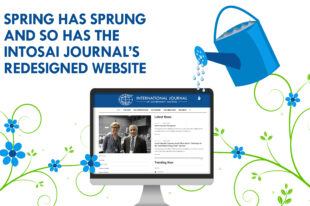Mobilizing Stakeholders to Increase Audit Impact

Public audit aims to enhance good governance by promoting transparency and accountability in governmental financial affairs.
Throughout the audit process, identifying any weaknesses and gaps is crucial, particularly pertaining to legal compliance; internal control; revenue assessment and collection; budget, public procurement and project management; and service delivery.
To address such deficiencies, audits present advice designed to achieve economy, efficiency and effectiveness in public resource use; however, merely providing suggestions does not meet an audit’s desired objectives. The ultimate objective—making a difference in the lives of citizens—can only occur when audited entities implement the recommendations.
Measuring an audit’s impact demands extensive survey and follow-up mechanisms to effectively identify program, project and service delivery enhancements.
SAIs can strengthen audit impact in numerous ways, such as conducting real-time audits; reducing impunity by taking action against financial irregularities; building ongoing relationships with audited entities; enriching audit quality; producing logical, convincing recommendations; and engaging media, Civil Society Organizations (CSOs) and other stakeholders.
Formulating solid stakeholder communication strategies has become essential, particularly as SAIs increase stakeholder inclusion in audit work. SAI Nepal’s work has resulted in several cases that illustrate increasing an audit’s impact through stakeholder engagement. This article provides two such cases.
Value Added Tax Case Study
According to Nepal’s constitution, all taxes are levied as per parliamentary acts. Each year, parliament authorizes specific Value-Added Tax (VAT) refund percentages on certain commodities sold to VAT-registered firms. An audit conducted by Nepal’s Office of the Auditor General (OAGN) revealed a total of 309 million dollars in VAT refunds over a 5-year period (2012-2017).
This amount included treasury monies paid to (1) oil processing industries that import crude oil (out of six process activities, five were carried out beyond Nepal’s borders and simply refined in Nepal), and (2) cellular mobile phone importers (not manufacturers). These refunds resulted in huge national revenue loss. Additionally, providing VAT refunds directly from the treasury goes against the VAT principle. Accordingly, the OAGN audit suggested reviewing and discontinuing such provisions.
The OAGN communicated this issue in audit reports for two consecutive years, and Nepal’s Ministry of Finance eventually established the High-level Tax System Review Commission (HTSRC). The HTSRC, created to assess revenue exemption and VAT refund impact, suggested a VAT refund reduction on certain goods—a recommendation in line with the International Monetary Fund’s 2015 report on Nepal that called for a limit on tax exemptions as per international practices.
During the subsequent annual OAGN report, the Public Accounts Committee (PAC) issued a directive—reduce (and limit) the practice of granting VAT refunds.
A few years later, VAT refunds on cellular mobile phones and certain oil products was reduced from 60 percent to 40 percent. However, the audit’s recommendation was not fully implemented, as several special interest groups successfully applied pressure on the government to continue the monetary returns.
The OAGN repeatedly reported and followed up on the VAT refund topic, and continued engaging the media to publicize the issue and raise public awareness. The communication campaign proved successful. The government finally abolished the practice of providing VAT refunds within these reported industries, and, as a result, annual gains of approximately 60 to 70 million dollars in revenue have been realized.
Capital Gains Tax Case Study
A foreign investment company owned 80 percent share of a telecommunications company in Nepal—shares fully transferred to another foreign company. A dispute arose as to whether the transfer of ownership from one foreign investor to another is taxable in Nepal.
As per Nepal’s current Income Tax Act (ITA), withholdings should be retained for (1) payments made in relation to activities carried out in Nepal and (2) arrangements entered into, or carried out, as part of a tax avoidance scheme (whereby funds can be re-characterized). The dispute drew much attention to this specific taxation issue.
The seller of the Nepalese telecommunications company paid 97 million dollars as an advance in capital gains tax; however, the official sale and purchase agreement was not submitted to the appropriate tax authority.
The OAGN reviewed the 15 percent advance payment and noted the purchasing company’s claimed 757 million dollar excess costs resulted in a 113 million dollar revenue loss to Nepal’s government.
These findings touched on two key elements. Nepal’s national ITA requires a 25 percent capital gains tax payment, thus the taxpayer, having remitted funds representing 15 percent, fell woefully short (367 million dollar shortfall). Further, the telecommunications company was believed to be participating in a tax avoidance scheme by inflating costs and reducing capital gains tax associated with the company’s sale.
The story broke publicly as the OAGN submitted the annual report to Nepal’s president. The OAGN also made the report available online and held a press conference to ensure the news received maximum coverage and stakeholder engagement.
Nepalese tax experts were divided on the issue. Various CSOs raised questions about the government’s failure to collect proper revenues. Yet, some questioned tax revenue recovery from an outgoing investor due to potential jurisdictional conflicts. Nepal’s government established a panel to investigate the case. Parliamentary committees summoned the tax authority to further discuss the matter. Government tax collectors were instructed to withhold funds from the outgoing investor. Some groups (lobbying on behalf of the telecommunications company) put pressure on the government. The press and media continuously reported on the story.
During the issue’s debate, the telecommunications company paid an additional 108 million dollars; however, this amount was still insufficient (in keeping with the current tax law). Ultimately, a tax liability of 590 million dollars was assessed to the outgoing investor, and this case demonstrates substantial achievement in audit impact through constant, continued stakeholder engagement.
Conclusion
SAIs play a vital role in holding government accountable and promoting economy, efficiency and effectiveness in government operations. They help deter misuse and extravagance, assist decision-makers by performing independent assessments and provide much-needed warnings to public sector entities by identifying emerging trends and challenges.
SAIs must go beyond simply publishing a report by engaging and communicating with stakeholders. Media outlets, CSO’s and the general public provide exposure and can exert pressure toward audit recommendation implementation—one way to measure an audit’s success.
Audit reports should not be mere paperweights. Through implemented recommendations, audits should improve government resource management and, ultimately, add value and benefits to the lives of citizens.





